Janet Chester Bly's Blog, page 9
August 29, 2012
AUTHOR'S NOTES ON HIS MANUSCRIPT
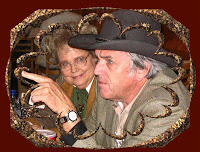
Janet Chester Bly & Stephen Bly
Reading A Writer's Mind
by Janet Chester Bly
Copyright©2012
Author Stephen Bly, my late husband, wrote commentary to his
fans about the books he wrote, even sometimes while he was writing them, as in
these sidebar comments he made for Creede of Old Montana. To begin with,
this novel was originally titled by him, The Lady Who Lingered Too Long. However,
the publisher wanted a more western ring for their Bly customers, rather than
an allusion to a romantic story. But this book's still a historical western
romance by any other name.
On caring about his characters ...
When the weather changed fast at one point. "I reckon
Sonny is wishin' she still had that yellow parasol she toted in the opening
scene," says author Stephen, "For the life of me, I can't remember
where she laid that down."
And when we finally get to the scene where protagonist Avery
John Creede meets the lady who has been lingering, author Steve wonders aloud
if he could use some counsel from a character in another novel, smooth talking
contemporary cowboy Brady Stoner, but there's no time machine available:
"Somehow, I reckon Avery will bumble through on his own."
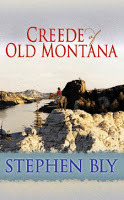
Creede of Old Montana
On back story the reader never knows ...
Steve made the comment about Avery John Creede as he plopped
on a park bench in Fort Benton, Montana ... "This is as scrubbed up as he
has been since that time he got in a fistfight with the governor and his wife.
Ah, but that's another story."
On how his Old West cowboy character might react in a modern
day setting ...
"I'm not sure Avery John Creede would be happy with a
quiet life He thrives on reacting under pressure. He would be quite bored with
life in the 21st century. . .unless he climbed some mountains, or skydived off
a tall building, or volunteered to drive a Brinks truck through Baghdad."
On historical setting teenagers ...
"Tabitha Leitner is 'almost' sixteen. What wonderful
energy and enthusiasm. Isn't it nice to know that no matter what century you're
in, some things never change?" and later when Tabitha meets Avery's
nephew, "I have no idea where this relationship is leading. Which, come to
think of it, is the lament of every parent of a teenage girl."
On the inner fears of his protagonist ...
Teen Tabitha gets to the core when she blurts out, "But
you are childless and alone." Avery John Creede sucks in a deep breath,
then paces in front of his designated park bench and tries to relate all the
reasons why he's still single in his forties. "Whoa," says author
Stephen, "That hit Avery harder than a gun barrel to the back of the head.
It's the very thing he tries so hard never to think about."
On character development in the plotting process ...
"There is something about Carla Loganiare that Avery
sees, but others miss. I haven't figured it out yet. But as soon as he tells
me, I'll let you know."
On the importance of inner monologue in his novels ...
"Some authors don't like to use interior
monologue (the part in italics) at all. I've found it helpful in getting
to know what a character thinks. . .especially what they are thinking about the
Lord. For some, like Avery John Creede, faith is a private, quiet relationship.
He doesn't always talk about it, but it's close to him, shaping everything he
does."
~~~~~~~~~~~~~~~~~~~~~~~
For writers: is their a crafting device you use that perhaps some advise against? Do your characters ever worry, alarm or surprise you?
For readers: what do you find most interesting to learn about how your favorite author does the writing process?
~~~~~~~~~~~~~~~~~~~~~~~~~
Creede of Old Montana available in hardback/large print or ebook format, such as Kindle, Nook, iPad ...
To learn more about Stephen Bly or Janet Chester Bly and their books ...
website: http://BlyBooks.com (bookstore under construction until first September)
blog: http://BlyBooks.blogspot.com

Published on August 29, 2012 07:00
August 27, 2012
MONA HODGSON'S book trailer for historical romance novel series
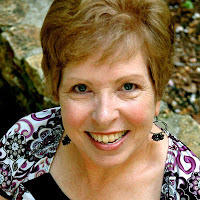
Mona Hodgson
Today Mona Hodgson, author of the Sinclair Sisters of Cripple Creek
series, is celebrating the release of her very first series book trailer!
The final book in this
series, Twice a Bride, comes out on October 2, 2012, from
WaterBrook Multnomah Publishing Group.
You can join Mona's celebration this
week at http://monahodgson.wordpress.com/.
"Congratulations on completing this wonderful series, Mona!"
Below is the book trailer for Twice A Bride by Mona Hodgson
The Sinclair Sisters of Cripple Creek Series
Available from Waterbrook Multnomah Publishers
Twice A Bride goes on sale October 2nd, 2012
Enjoy this fun and beautiful video, and don't forget to visit Mona at www.MonaHodgson.com !

Published on August 27, 2012 12:39
August 21, 2012
STUART BRANNON'S FINAL SHOT Book Trailer
Published on August 21, 2012 13:39
August 1, 2012
WARNING: WATCH FOR FAITH THEFT
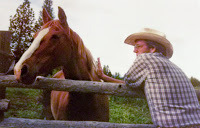
Stephen Bly with Sundance
Stephen Bly
Copyright©1993,2010
I spoke at a
conference in a large eastern U.S. city and was driven to the location by a
friend. Even though security guards patrolled the parking lot, I discovered
that crowbar looking devices had to be bolted across vehicle steering wheels.
“To protect from theft,” my friend explained.
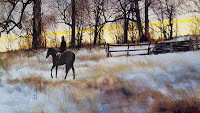
In the Old West
days, most everyone rode horses. Nothing could prevent stealing an animal. No
blinking lights, sirens, beepers, or steer-lock devices existed. But in spite
of the fact horses often stood out in the open, horse stealing was a rare
event. Part of the reason? Horse thieves got hung. No trial. The sentence got
carried out at the nearest tree. That tended to discourage horse theft.
But did the
punishment fit the crime? That’s the real test of justice.

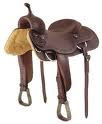 Most cowboys rode
Most cowboys rode$10 horses and owned $40 saddles. A death sentence for stealing a $10 item
seems stiff. But in those days a horse meant survival. Those on foot had little
chance of safe travel, what with wild animals, outlaws, cattle and buffalo
stampedes, range fires, renegades and criminals, snakes and thirst as enemies.
A horse provided a running chance.
We all need a
fighting chance to overcome hardships. A horse may not help in a spiritual
wilderness, but faith will. Nobody has the right to steal or undermine
another’s faith.
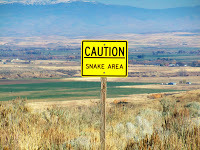
Caution: Snake Area
Jesus warns, “If
anyone causes one of these little ones who believe in me to sin, it would be
better for him to be thrown into the sea with a large millstone tied around his
neck” (Mark 9:42).
To mess with a
weaker one’s spiritual conscience is a capital offense.
Think about it.
What actions or words could cause a child of God to stumble?
How could you strengthen someone’s faltering faith
today?

Published on August 01, 2012 07:52
July 29, 2012
WHAT'S YOUR PEACE SYMBOL?

by Janet Chester Bly
Copyright 2008
In that day the wolf and the lamb will lie down together, and the leopard and goats will be at peace. Calves and fat cattle will be safe among lions, and a little child shall lead them all. Isaiah 11:6
That's a startling, true picture of what heaven will be like. The New Earth that God has planned for all His children. I can hardly wait.
Meanwhile, you and I struggle to fight for peace now in a sin-sick, war-torn world ... where the obscene and unthinkable happens.
To help with your peace journey, why not pick out a visual aid that you will see often? Here's some suggestions. . .
a) a lion or wolf and lamb lying down together
b) a rose of Sharon
c) a Peace rose
d) an angel
e) a serence white swan

f) a boat with full sails in placid water
g) a lighthouse in a storm
h) sheep on a hillside
i) peace saying on a magnet, poster, greeting card, necklace, bracelet
j) cross-stitched peace message
k) weapons converted to farm tools
l) a desert in bloom
m) a white flag of surrender
n) a dove
o) a soaring eagle
Did these ideas spark one of your own?

The fight for peace can be a lifelong process. I know I need a steady, daily routine to find my inner rhythm and my outer pace for dealing with ongoing and unexpected challenges.
The symbols that work for me are beach or forest scenes. The sight of a hammock or chaise lounge. A quiet sanctuary. Or a cross.

To get even more benefits, research all that your chosen symbol means, its history context and full application for your own life.

Published on July 29, 2012 08:46
July 25, 2012
HOW'S YOUR HOULIHAN?

Stephen Bly with Sundance
Stephen
Bly
Copyright©1993,2010
I
never laid any claim to being a roper, although I do enjoy tossing a loop now
and then. One thing you learn right away. . .there are different types of
throws to lasso a critter. One of the slickest is what old timers call the
houlihan. Most often used when the cowboy worked from the ground, it was a
favorite throw on cattle drives for roping the next horse out of the remuda. A
quick, accurate throw that doesn’t spook the other horses because they’ll be
the next in line to be caught.

Here’s
how to do it. Carry your loop in your hand. When you get close enough to the
horse, swing one brisk rotation around in front of him toward the right. Then
pull the loop over his head. When done right, it falls on the horse’s head flat
and open, then drops straight down with the honda sliding down the rope, taking
up slack as it moves. This avoids the whirling around the head of more standard
roping procedure. The other horses don’t know what’s happening. Those cowboys
in an outfit adept at tossing houlihans got the task of roping everyone’s horse
out of the string.
Quick.
Fast. Sneaky. No one else knows what’s happening. Like the secret stalk of
temptation that plays on your mind. No pre-warning to you or to others close by
who could also get caught in the trap.
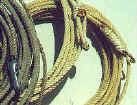
The
Bible cautions us to be prepared “that Satan might not outwit us…for we are not
unaware of his schemes” (2 Corinthians 2:11).
Your
enemy and mine ropes us in with subtle attacks more often than outright
assaults. We can get grabbed while we’re on the way to do something else, just
minding our business. That’s why we need to be alert at all times. The very
best advice: shake free of that loop, at the first sign, as soon as you sense
the shadowy presence nearby and over you. Then, continue on your journey.
You
can’t prevent temptations. We all face them. But you can watch out so you
aren’t caught in a spiritual houlihan.
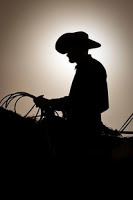
~~~~~~~~~~~~~~
Have you ever tried roping anything? How'd you do?

Published on July 25, 2012 07:30
July 11, 2012
INESCAPABLE, romantic suspense novel by Nancy Mehl

Author Nancy Mehl
Set Against the Backdrop of a Small Mennonite Town . . .
from the Road To Kingdom Series
Lizzie Engel is used to running away. At eighteen, she left her Mennonite
hometown, her family, and her faith with plans never to return. Five
years later, Lizzie finds she'll have to run again. False accusations at
her job, a stalker, and a string of anonymous threatening letters have
left her with no other options. This time, however, her escape is back
to Kingdom, her hometown.
As Lizzie becomes reacquainted with
Kingdom, she realizes she may not have left her Mennonite roots and her
faith as firmly in the past as she thought. She draws on the support of
Noah Housler, an old friend, as she hides out and attempts to plan her
next steps.
When it becomes painfully clear that the danger has
followed Lizzie to Kingdom, suspicions and tensions run high, and she no
longer knows who to trust. With her life and the lives of those she
loves at risk, Lizzie will have to run one last time. . . .
Comment from Janet:
I just read this book and the first paragraph got me bingo! right into the story. I love that about any novel. I knew at once the danger, the character's mood, and a bit about her and her family.
Here it is:
For the third night in a row the man stood under the street light, staring up at our apartment, his face hidden by a red ball cap pulled down to just above his eyes. I closed the curtain, trying to keep my movement slow so he wouldn't notice me watching him. But I couldn't keep my fingers from trembling.
"What's the matter, Mama?"
I turned to smile at Charity. Though only six, she knew when I was worried or afraid. Unfortunately, there's been a lot of that lately.
About the Author:
Nancy
Mehl lives in Wichita, Kansas with her husband Norman and their dog,
Watson.
She’s authored thirteen books and all
of Nancy’s novels have an added touch – something for your spirit as
well as your soul.
“I welcome the opportunity to share my faith through
my writing,” Nancy says. “It’s a part of me and of everything I think or
do. God is number one in my life. I wouldn’t be writing at all if I
didn’t believe that this is what He’s called me to do. I hope everyone
who reads my books will walk away with the most important message I can
give them: God is good, and He loves you more than you can imagine. He
has a good plan especially for your life, and there is nothing you can’t
overcome with His help.”
Order Inescapable through online bookstores such as Amazon or any quality local bookstore:

Published on July 11, 2012 06:53
July 5, 2012
7 QUICK TIPS TO WRITE A WESTERN
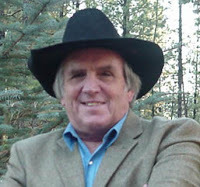
Stephen Bly
by Stephen Bly
Copyright©2008
The man with the cowboy hat is holding a thesaurus and a
dictionary and he tells his friend, "I've got all the words I need for my
western. Now I've got to put them in the right order."
So, you want to be a writer? That's a noble goal, it's
true. Jist like big time wrestlin', the urge comes over you, to pen that one
immortal line before your life is through and find your name in micro-print in
America's Who's Who.
So, you want to be a writer? Well, pardner, shake my
hand. I hope your journey's short and swift to that published Promised Land,
where reviews flow in from coast to coast with accolades so grand. And among
them literary giants, you're asked to take your stand.

So, you want to be a writer? Well, it don't sound all
that tough. I hope you find the contracts big and loaded down with fluff. And
editors a beggin' you to send them some more stuff, while your banker's holdin'
up his hands, cryin', "Hold it! That's enough!"
So, you want to be a writer? I know jist how you feel. It
holds a certain status and a glamorous appeal. I've been there once or twice
myself. That hunger's kind of real. 'Til one day you wake up and find, it ain't
that big a deal.
(from "So, You Want To Be A Writer?" copyright©1997)
Here's seven quick tips that might help you kick that barrel
down the trail.

1.) Get real. Capture the grime and odor of the Old West.
Can you imagine what a crowded stagecoach smelled like? But remember, even
cowboys, mountain men and gunslingers had a bath now and then.
2.) Get the culture. While writing Creede Of Old Montana and
the setting at Fort Benton, I found out about the decade of smoldering
resentment against Chinese mine laborers. In September of 1885, white men at
Rock Springs, Wyoming Territory, went on a rampage, killing 28 Chinese and
wounding 15 others. Several hundred more Chinese got chased from the area.
Similar incidents sprang up all over the West. Congress decided in 1882 to
suspend all Chinese immigration, but the violence continued. This played a part
in the story I was creating.
3.) Get the details. Baker and Brother was one of the
West's leading firearm dealers. Their store in Fort Benton armed thousands of
cattlemen, miners, farmers and Indians. Thus, I added Baker and Brother
Mercantile to the scene.

4.) Get something new. I had created all my character
sketches and am writing along when all of a sudden one of them does an
unexpected thing. Ace Emerson has a girlfriend? Why, he's only a teen. I
leave the kid on his own for a chapter or two and look what happens. What's an
author to do? A new wrinkle to weave in. Maybe I should have left him trapped
in a grizzly bear den.
5.) Pull out something old. Characters from other novels
have a way of reappearing in my new ones. In Creede Of Old Montana, young
Angelita Gomez from The Code Of The West Series returns. She hadn't changed too
much. She's now selling elephant rides on a 'borrowed' baby elephant. So like
her.
6.) Salt with someone sane. Besides the hero/ine, that is.
Like the Fort Benton mayor who makes common sense, unlike those civic leaders
in the movie High Noon. Not everyone out west was a shootist. Not
everyone packed a gun on his or her hip. But they did recognize evil when they
saw it. Some, like the mayor, just had to discover what they could do about it,
what were reasonable options.
7.) Pepper in action. Often I hear from writers that they
have trouble keeping their plot moving. They get about two or three chapters
into the story and it seems to grind to a halt. They can't think of where to go
next. So, they ask me, "What do you do with writer's block?" I'm not
much help to them. I've never had that malady. But I can give a bit of advice
about what to do when the story drags. This literary trick has never failed me.
It will grab your reader's attention and pull them right back in. Grab your pen
and write this down. Tape it to your computer. Memorize it. When your plot
dies, shoot someone. That's it. Always works for me. I wonder why they don't teach
that in English 101?
~~~~~~~~~~~~~~~~~~~~~~
When's the first time you knew you wanted to be a writer?
~~~~~~~~~~~~~~~~~~

Creede of Old Montana
An ex-cavalry soldier tramps to Fort Benton, Montana, in search of four Army pals who don't show up for a scheduled reunion. Instead, he stops a bank robbery and finds himself in one conflict after another, which includes two women. He buys a ring for one of them. The other wants him dead.
Available on Kindle, Nook or iPad. Also, through http://www.BlyBooks.com If you have trouble with this website, you can email janet@blybooks.com for ordering instructions.
Stuart Brannon's Final Shot by Stephen Bly (with Janet, Russell, Michael & Aaron Bly) now available through Amazon.com as hardback, paperback or ebook. Click below.

Published on July 05, 2012 05:59
July 2, 2012
THE DOCTOR'S DEVOTION, a novel by Cheryl Wyatt

The Doctor's Devotion
Eagle Point Emergency Series:
Saving lives—and losing
their hearts—in a small Illinois town.
ABOUT THE BOOK:
When he fled Eagle Point years ago, former air force
trauma surgeon Mitch Wellington left only broken dreams behind. Now he’s back with a new
dream—opening a trauma center in the rural area and saving lives. He hopes to hire the
quick-thinking nurse who impressed him during an emergency. But Lauren Bates lost her faith and
doesn’t believe she deserves to help anyone. Mitch knows firsthand what loss feels like. And it’ll
take all his devotion to show Lauren that sometimes the best medicine is a combination of faith,
community—and love.
FIRST CHAPTER EXCERPT LINK:
http://scrollsquirrel.blogspot.com/2012/06/excerpt-doctors-devotion-by-cheryl.html
ABOUT THE AUTHOR:

Author Cheryl Wyatt
Born Valentine’s Day on a Navy base, Cheryl
Wyatt writes military romance. Her debuts earned RT Top Picks plus #1
and #4 on Harlequin's Top 10 Most-Blogged-About-Books, lists which included NYT
Bestsellers. Cheryl loves interacting with readers. Sign up for her newsletter
for yummy story recipes and other fun stuff exclusive to newsletter subscribers
at www.cherylwyatt.com.
Cheryl loves interacting with readers and can
often be found plotting mayhem with them on her Facebook page, dedicated to
readers:
http://www.facebook.com/CherylWyattAuthor
BOOK PURCHASE LINKS:
Barnes and Noble: http://www.barnesandnoble.com/w/the-doctors-devotion-cheryl-wyatt/1108266780
Christianbook.com: http://www.christianbook.com/the-doctors-devotion-cheryl-wyatt/9780373877546/pd/877546

Published on July 02, 2012 19:37
June 27, 2012
THE COEN BROTHERS' TRUE GRIT
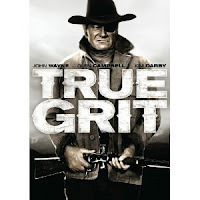
John Wayne's True Grit
by guest blogger Duane Spurlock
Spur and Lock Mercantile
http://spurandlock.blogspot.com/
During the Silent Era and Hollywood's Golden Age, when westerns were a regularly produced film genre, new films based on western novels and stories were commonplace. New western fiction appeared weekly on newsstands and on bookstore shelves, and Hollywood producers saw little need for remaking a western movie that already had been based on a prose work.
Therefore the number of western films that have had remakes is relatively low. Consider, then, the number of western remakes of movies already assigned classic status. A smaller number still, right?
Look at this in another manner – how many western films have been based on books whose remakes have been produced during the original author's lifetime?
Can you count 'em on one hand? I can, if I don't take time to gargle the Internet for further research (other than to double-check some dates) . . .
1. Destry Rides Again by Max Brand (Frederick Faust): three film versions, including the famous JamesStewart/Marlene Dietrich film (1939); less famous is the Audie Murphy version titled Destry (1954 – granted, Faust had died in World War 2 by then); and a still-less-known version with Tom Mix was made in 1932. That's two versions during Faust's lifetime. (Just for kicks, let's throw in a 1959 Broadway musical version starring Andy Griffith.)
2. 3:10 to Yuma by Elmore Leonard: two versions, one with Glenn Ford and Van Heflin (1957), and the other with Russell Crowe and Christian Bale (2007).
3. Stagecoach, based on Ernest Haycox’s story “The Stage to Lordsburg,” has been filmed multiple times--most famously by John Ford and starring John Wayne, but only once during the author’s life. Another Haycox story, “Stage Station,” was the basis for two films: Apache Trail (1942) starring Lloyd Nolan and Donna Reed, and Apache War Smoke (1952) starring Gilbert Roland and Glenda Farrell. Only the former was released during the author’s lifetime.
4. The Maltese Falcon by Dashiell Hammett. Yes, I'm willing to consider this a western: It occurs in a western city, San Francisco; it has been well-argued that Sam Spade's occupation, private operative, is a literary updating of the popular culture fashioning of the romanticized loner cowboy; the time and setting are not so distant from the Wild West era; the story's tropes and the play of the characters in their fringe-culture environment certainly displays similarities to activities in a semi-lawless boomtown during the western-expansion golden age. Besides the famous John Huston/HumphreyBogart adaptation (1941), there was a 1931 version with Ricardo Cortez.
5. And then there's True Grit by Charles Portis: first filmed by Henry Hathaway in 1969 with JohnWayne, and remade in 2011 by Ethan and Joel Coen.
True Grit is now a member of a very select club. (If I've forgotten other members of the club,
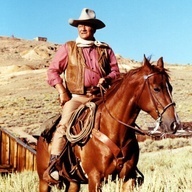
John Wayne
please let me know.) There are a number of surprises that some people express about this fact. Indeed, both surprise and dismay were expressed by many folks when the plans for the remake were first announced:
At a time when so few westerns are filmed, why shoot a new version of an existing film? Why remake a movie already declared a classic? Or, considered another way, Why remake John Wayne's greatest film? Why remake this film? Who do these Coens think they are, anyway?
I'll make an effort to respond to these questions from my own highly subjective perspective.
At a time when so few westerns are filmed, why shoot a new version of an existing film?
I'm sure the Coens have addressed this somewhere, but without reading any of that, I know Hollywood is all about successful box office draws. Just as mainstream (or, if you prefer J.A. Konrath's term, Legacy) publishers are looking for bestsellers, Hollywood is looking for blockbusters. So, if a movie has performed well in the past, why won't it perform well now?
And if someone wants to make a western, which Hollywood apparently hasn't been so sure about these days, why wouldn't you make one that's already considered a success? Why spend money on something untested, on something that might not be a Sure Thing? (And what, after all, might be a Sure Thing in this sketchy genre called Westerns? There are no fast cars, no CGI monsters or rocket ships, no cosmic explosions – heck, there are NO ZOMBIES!) Therefore, following the Algebra of Money, it makes sense to produce a new version of an existing film.
Why remake a movie already declared a classic?
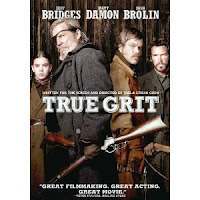
True Grit with Jeff Bridges
The gist of my response would be to say, “See previous response.” I'll throw in a few more details: Hollywood money men seem to like gambling on a Sure Thing. It was a classic once, why can't it be a classic again? The original hung its hook on John Wayne; we don't have Wayne, but we have those off-kilter Coen Brothers who seem to have a following, and they made Money with some of their other movies, so let's roll the dice that are somewhat loaded with Coens and Their History Of Making Money.
Or, considered another way, Why remake John Wayne's greatest film?
First, I'll argue that True Grit is not John Wayne's greatest film. It may be his best-known movie because of an awareness that exists beyond the typical audience for western movies, thanks in part to its ubiquitous existence on cable channels. It's true he won his only Oscar for his performance as Rooster Cogburn, and I enjoy him in that role. But I'll argue that he acted as well or better in other movies. Stagecoach, another John Wayne film (perhaps the one that most got his star rising), has been remade multiple times. And one might argue that Wayne remade one of his own films when he performed in Rio Bravo. (Or was that El Dorado?) Anyway, while this point may have value in discussions of other topics, it has no more weight in this discussion than “You shouldn't remake a movie that didn't win an Oscar.”
Why remake this film?
See my first and second responses, above. And, to borrow from my third response, I'll say that True Grit may be John Wayne's most famous film, and people who know it or are at least aware of it might have been willing to pay money (see references to Algebra of Money, above) to satisfy their curiosity about a remake.
Who do these Coens think they are, anyway?

Brothers Joel & Ethan Coen
I haven't met these boys. But from the evidence, I'd say they are solid storytellers with a fine sense of Hollywood history and filmmaking under their hats. They understand genre and how to use, expand, and step outside of its tropes. Apparently they know how to nurture fine performances from actors. They understand how to play off-kilter in a way that is endearing and strengthening for a film (just watch Blood Simple, Raising Arizona, TheHudsucker Proxy, and O Brother, Where Art Thou?), and True Grit is a story with some off-kilter moments; go read the book. One can argue they had proven their facility in filming a western when they made a successful movie from the dreary story of No Country For Old Men. (Really, it's a western.) So, altogether I'd say they were actually a good choice for heading up a remake of True Grit. Audiences really wouldn't have appreciated Hollywood's turning over the history of a beloved movie to a couple of hacks.
~~~~~~~~~~~~~~~~~~~~~~~~~
What's your take on the retake of the movie True Grit?
~~~~~~~~~~~~~~~~~~~~~~

Published on June 27, 2012 09:00
























